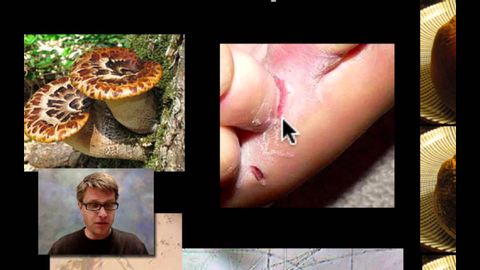真菌 (Fungi)
Cheng-Hong Liu 發佈於 2021 年 01 月 14 日  沒有此條件下的單字
沒有此條件下的單字US /məˈtɪriəl/
・
UK /məˈtɪəriəl/
- n. (c./u.)布料;素材;資料;材料;物質
- adj.重要的;物質的
US /ˈbesɪkəli,-kli/
・
UK /ˈbeɪsɪkli/
- n.戰績;表格;形狀
- v.t.組成團體、社團;塑形;將...塑形
US /ɪmˈpɔrtnt/
・
UK /ɪmˈpɔ:tnt/
- adj.重要;重要的;有影響力的
- n. (u.)重要的事

